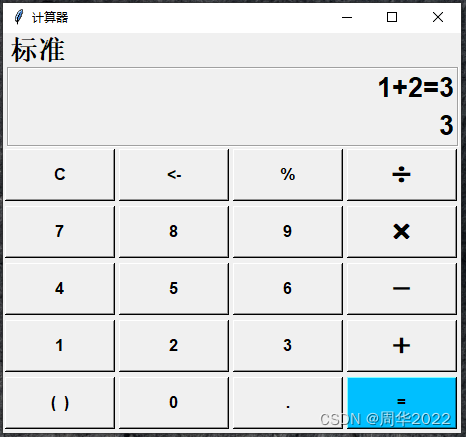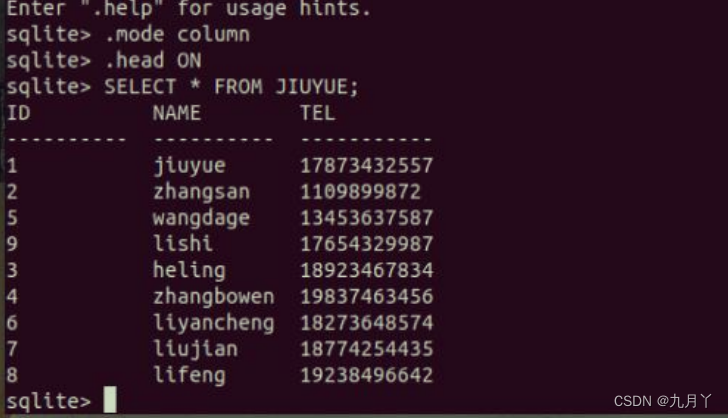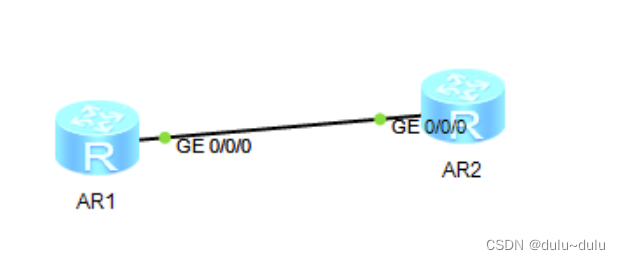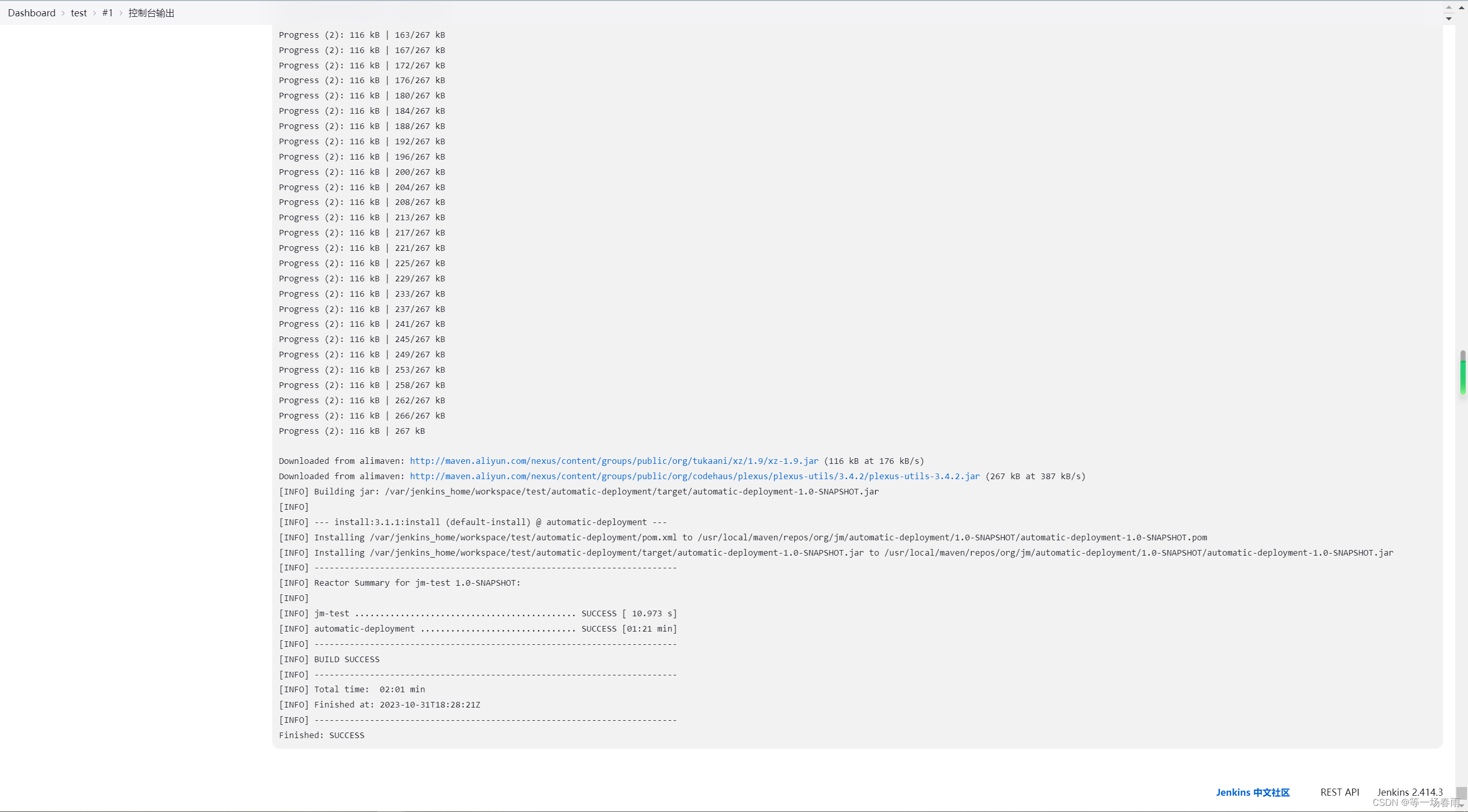题目: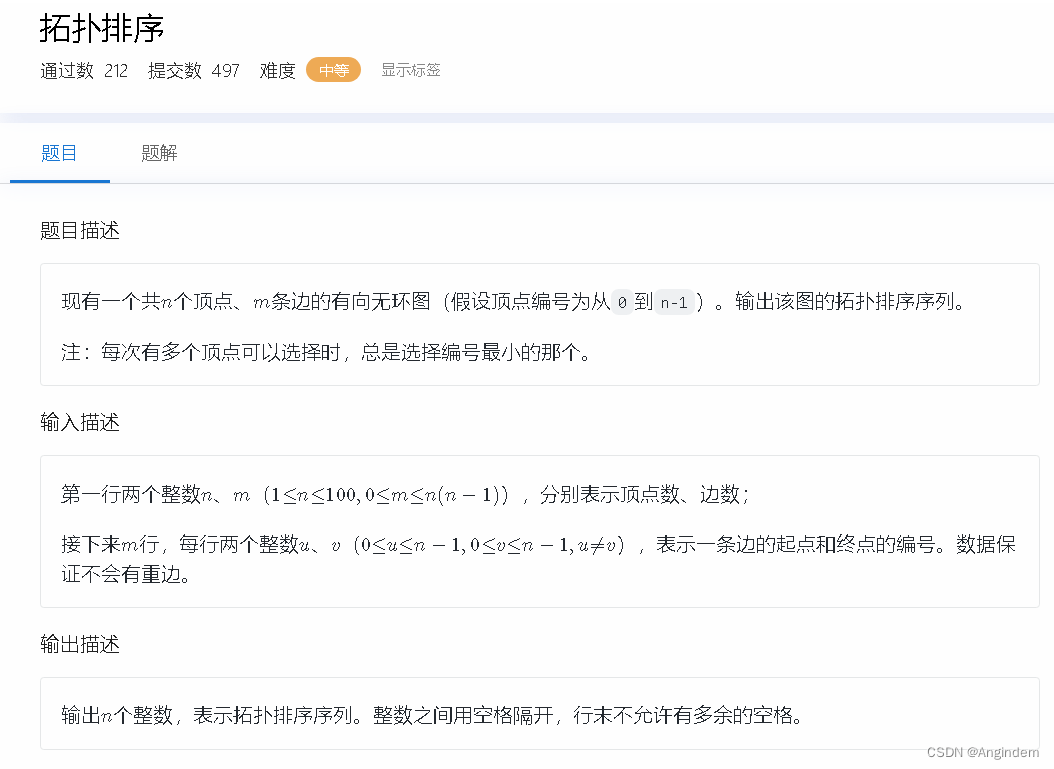
样例:
|
| 0 1 3 2 |
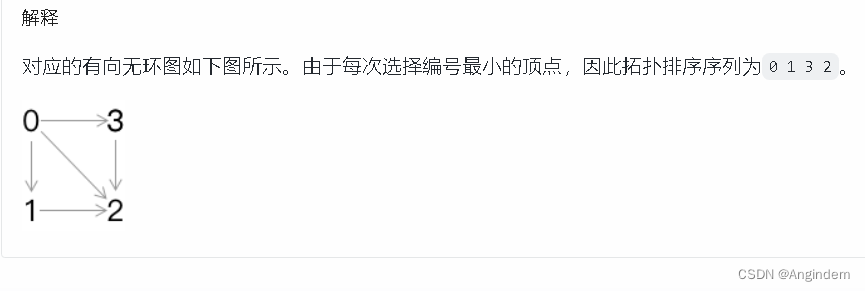
思路:
| 一个由图中所有点构成的序列 A 满足:对于图中的每条边 (x,y)(x,y), x 在 A 中都出现在 y 之前,则称 A 是该图的一个拓扑序列。 |
而拓扑序列当中可以有多种合法的拓扑序列,其中无向图不存在拓扑序列。
由于有多种合法的拓扑序列,所以题目要求选择编号最小的结点排序。
代码详解如下:
#include <iostream>
#include <vector>
#include <queue>
#include <cstring>
#include <algorithm>
#include <unordered_map>
#define endl '\n'
#define YES puts("YES")
#define NO puts("NO")
#define umap unordered_map
#define All(x) x.begin(),x.end()
#pragma GCC optimize(3,"Ofast","inline")
#define IOS std::ios::sync_with_stdio(false),cin.tie(0), cout.tie(0)
using namespace std;
const int N = 2e6 + 10;
int n,m;
umap<int,int>d,arr; // 记录存储所有结点的入度数量
// 数组模拟链表
int h[N],e[N],ne[N],idx;
inline void Add(int a,int b)
{
e[idx] = b,ne[idx] = h[a],h[a] = idx++;
}
inline void topoSort()
{
// 建立优先队列,优先选着编号小的结点拓扑排序
priority_queue<int,vector<int>,greater<int>>q;
// 选择入度为 0 的结点作为最前面的起点
for(int i = 0;i < n;++i)
{
if(!d[i]) q.emplace(i);
}
// 开始 topoSort 搜索
while(q.size())
{
// 选择当前走动搜索到的结点
int now = q.top();
q.pop();
arr[idx++] = now; // 存储当前结点作为的拓扑结点
// 遍历当前结点所连接到的结点
for(int i = h[now];i != -1;i = ne[i])
{
int j = e[i]; // 获取连接的结点
if(d[j]) --d[j]; // 删除对应结点的 入度边
if(!d[j]) q.emplace(j); // 如果该入度数为 0 之后,说明可以选择作为拓扑序列
}
}
}
inline void solve()
{
// 初始化链表头
memset(h,-1,sizeof h);
cin >> n >> m;
while(m--)
{
int a,b;
cin >> a >> b;
Add(a,b); // 连接图
++d[b]; // 记录相应结点的入度
}
idx = 0; // 重复利用一下下标
topoSort(); // 开始拓扑排序
for(int i = 0;i < idx;++i)
{
if(i) cout << ' ';
cout << arr[i];
}
}
int main()
{
// freopen("a.txt", "r", stdin);
IOS;
int _t = 1;
// cin >> _t;
while (_t--)
{
solve();
}
return 0;
}

